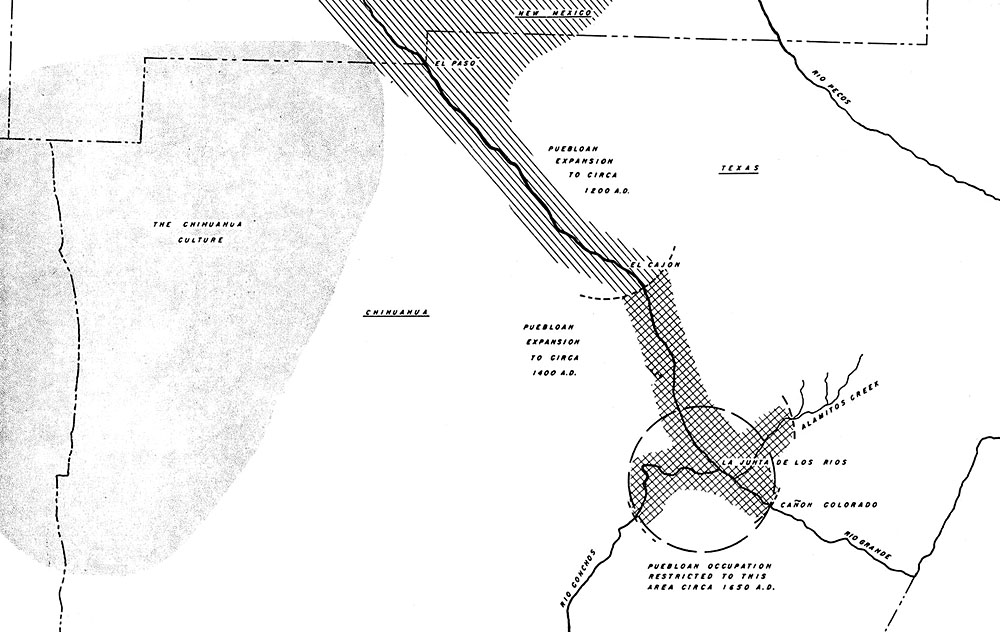Map from a 1952 American Antiquity article that Kelley wrote entitled "Factors Involved in the Abandonment of Certain Peripheral Southwestern Settlements." He was trying to explain the expansion and contraction of farming-based settlement as reflected in the archeological record of La Junta. He saw population movement as resulting from "the disturbance of a delicate ecological balance existing between the principal subsistence life zones and the Apache and puebloan peoples of the region." He postulated that severe drought in the first half of the 18th century had confined La Juntan peoples to the immediate vicinity of the river confluence.
This article shows J. Charles Kelley's "big picture" approach—he was a true scholar—a man of ideas who sought to relate his archeological findings to broad patterns of human history, and a man who was not afraid to put forth reasoned inferences in print to be challenged and evaluated with new data and new ideas. From Kelley 1952a, Figure 1. |
